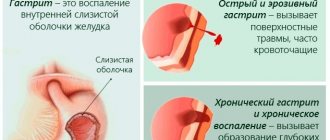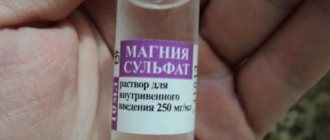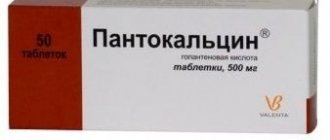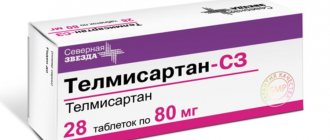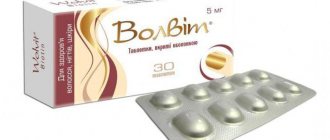A doctor may prescribe a medication such as calcium gluconate for calcium metabolism disorders. Calcium is required by the body for the functioning of the cardiovascular and musculoskeletal systems. In addition, it is necessary for blood clotting and transmission of nerve impulses. Calcium gluconate injections speed up recovery and stimulate the functioning of internal systems and organs. Let's try to figure out in what cases this drug is used, indications for the use of this drug.
Peculiarities
Calcium gluconate is a chemical in the form of a white granular or crystalline powder. It has no taste or smell. Calcium gluconate solution for injection, in addition to replenishing its deficiency, also:
- reduces vascular fragility;
- eliminates inflammation;
- increases vascular permeability.
It has hemostatic, antiallergic and detoxifying effects. Ions of this element are needed for the process of blood clotting, transmission of nerve impulses, formation and preservation of bone tissue. Calcium is necessary for the body for the normal functioning of the musculoskeletal and cardiovascular systems.
This medicine helps cover the lack of ions, but, unlike chloride, it is less irritating and gentler. The solution for administering calcium gluconate is a clear, colorless liquid with the main active ingredient, which is calcium gluconate.
Calcium is available for injection in ampoules. 1 mm of solution contains 10 mg - a 10% solution. The drug is contained in a sealed glass ampoule with a volume of 10 ml. 1 package contains 10 ampoules.
Mechanism of action
Calcium ions, the deficiency of which the body reacts so sharply to, and which it really needs, take part in the conduction of nerve impulses. They make sure that the organs and systems in the body can work clearly and harmoniously. After entering the body, calcium spreads throughout all its tissues and immediately begins its participation in metabolic processes.
Strength of bones, normal blood clotting, increased production of adrenaline by the adrenal glands, decreased vascular permeability - all these processes are impossible without a normal calcium balance in the human body.
Important! The ions of this substance help teeth and bones remain strong and strong.
Calcium gluconate intramuscularly
According to the instructions for the use of calcium gluconate in ampoules, intramuscular administration of this drug is contraindicated in case of excess calcium in the body, renal failure, or problems with the heart and lungs. The injection is given into the gluteal muscle, after which the person feels slight pain. This method of administering the drug has advantages. After the procedure, there is no bruise or bump left, the drug quickly penetrates the blood. It is almost evenly distributed throughout all tissues and is included in mineral metabolism.
Vacation at the pharmacy
To purchase the product in ampoules, you must have a prescription, which is prescribed by your doctor.
A doctor may prescribe a medication such as calcium gluconate for calcium metabolism disorders. Calcium is required by the body for the functioning of the cardiovascular and musculoskeletal systems. In addition, it is necessary for blood clotting and transmission of nerve impulses. Calcium gluconate injections speed up recovery and stimulate the functioning of internal systems and organs. Let's try to figure out in what cases this drug is used, indications for the use of this drug.
Intravenous injections
As indicated in the instructions for the use of calcium gluconate in ampoules, children are allowed only intravenous administration. Intravenous injections are indicated for:
- allergies;
- some diseases of the thyroid gland;
- jade;
- vascular permeability;
- myoplegia;
- hepatitis;
- eczema;
- liver intoxication.
This medicine may be given as a hemostatic agent. Intravenous injections are carried out for poisoning and psoriasis. The drug is prescribed for the treatment of skin diseases.
Overdose
Cases of drug overdose are usually associated with its long-term use or excessively high dosage.
In cases of overdose, symptoms and conditions appear such as:
- nausea, vomiting, constipation.
- fatigue and excessive irritability.
- painful sensations in the peritoneum.
- muscle weakness.
- increased urine production.
- severe thirst and dry mouth.
- increased blood pressure.
- formation of kidney stones.
If an overdose is established, further use of the drug is immediately discontinued. In particularly severe situations, the patient is prescribed intravenous injections of calcitonin. It is possible to use droppers with an antidote.
Indications for use
The instructions for calcium gluconate in ampoules say that injections can also be prescribed for:
- increased need for calcium during postmenopause, pregnancy and lactation;
- bronchitis, runny nose and colds;
- tetany, osteoporosis and hypoparathyroidism;
- bone fractures, chronic diarrhea and treatment with medications against epilepsy;
- hypocalcemia;
- disturbances in the functioning of nerve impulses in muscle tissue;
- poisoning with magnesium salts and fluoric acid, oxalic acid.
Injections with this drug are additionally included in complex therapy when it is necessary to stop bleeding, remove toxins from the liver, alleviate pulmonary tuberculosis, bronchial asthma and dystrophy. Also, such injections are included in complex treatment:
- serum sickness;
- febrile syndrome;
- hives.
It is indicated as an additional hemostatic agent in the treatment of various bleedings: nasal, pulmonary, uterine in women and gastrointestinal.
When to use
The drug is prescribed for such conditions of the body when the level of calcium ions in a person’s blood decreases to a critical level.
Indications for use of calcium gluconate in the form of injections:
- treatment of allergic manifestations with the use of antihistamines.
- in the treatment of inflammatory processes of any type and various locations.
- problems with kidney function, since the body loses calcium very quickly - it is excreted in the urine.
- hepatitis, which occurs with inflammation of the liver parenchyma, as well as in cases where the liver is exposed to any toxic effects.
- disruption of the thyroid gland (hypoparathyroidism) - due to this disease, the concentration of calcium in the blood decreases sharply. The drug is not able to restore the lost functions of the glands; it only compensates for the lack of this element.
- the medicine is actively used as an auxiliary hemostatic agent for various bleedings - uterine, intestinal, nasal, pulmonary.
- excessive permeability of cell walls.
- bearing a child, lactation, menopause, intensive growth in children and adolescents - all those periods when the body feels a high need for calcium.
- rickets and other disorders of vitamin D metabolism.
- bone fractures of any complexity and increased bone fragility.
- appearance of teeth in children.
- poisoning with certain types of salts and acids.
- frequent rhinitis, colds, bronchitis.
- osteoporosis.
- diet low in calcium.
- conditions when calcium is intensively washed out of the body - prolonged diarrhea, treatment with drugs against epilepsy, bed rest for a long time, and others.
Instructions for use
As described in the instructions for use, calcium gluconate injections are absorbed quickly by the intestines, penetrating into the blood and taking on a bound ionized state. The most active is ionized calcium, which enters the bone tissue. The drug is excreted from the body in feces and urine.
The solution, both intramuscularly and intravenously, must be administered very carefully and slowly – 2-3 minutes. Adults are prescribed 10% calcium gluconate daily or every other day; the dosage for children intravenously is from 1 to 5 ml. They are given injections once every 2-3 days. The need for careful execution lies in the possibility of developing soft tissue necrosis, which requires emergency medical attention.
If the patient has mild hypercalciuria or nephrourolithiasis has been diagnosed, the drug is administered under the control of calcium levels in the urine. With this attitude, you can keep the absorption of calcium in the body under control. To prevent the risk of developing urolithiasis, the patient should drink plenty of water.
Prescription during pregnancy
Very often during pregnancy, the doctor prescribes the drug calcium gluconate. The thing is that with its deficiency there is:
- rapid fatigue;
- convulsions;
- severe toxicosis;
- anxiety;
- nervousness;
- overexcitement.
Also, a lack of the mineral leads to deterioration of the condition of hair, teeth and nails. If a pregnant woman receives this drug in the permitted doses, then the listed conditions are eliminated, and no pathologies develop.
Pharmacodynamics and pharmacokinetics
Entering the body parenterally (intramuscularly or intravenously), the drug ends up in the blood. About half of calcium gluconate monohydrate binds to albumin (the transporter), forming albuminate complexes.
The drug is distributed evenly throughout the organs and tissues. It even penetrates the placenta and other histohematic barriers, therefore it is found in all biological fluids, including breast milk. Excretion occurs through the urinary system.
Contraindications and side effects
As indicated in the instructions, calcium gluconate injections are prohibited for a number of diseases and disorders. The drug is contraindicated in:
- hypercalcemia;
- hypercoagulability;
- severe atherosclerosis;
- severe renal failure;
- tendency to thrombosis.
This medicine should be used with extreme caution by people suffering from urolithiasis and minor disorders of the kidneys. The exact dosage is indicated in the instructions for use of calcium gluconate in ampoules.
Adverse reactions are expressed as:
- constipation;
- diarrhea;
- vomiting;
- nausea;
- bradycardia.
When the drug is administered intramuscularly, necrosis sometimes occurs at the injection site. A person may feel a general feeling of heat and burning in the mouth. If the solution is administered too quickly, a sharp decrease in blood pressure and the development of pronounced arrhythmia are possible.
Description of adverse reactions
There are not too many side effects and undesirable consequences from using the drug in injections, but the likelihood of their occurrence must be taken into account.
The instructions for use describe the following side effects:
- as mentioned above, tissue necrosis at the injection site is the most common undesirable consequence. It occurs mainly due to a violation of the technique of administering the medicine. To prevent this, each subsequent injection should be given to a different area. You can dilute the drug administration regimen with 1-2 days of rest (with the every other day regimen). In this case, the method of temporarily canceling injections is very effective.
- nausea, sometimes accompanied by vomiting, diarrhea or, conversely, constipation.
- decrease or increase in heart rate. This effect can occur if the drug is administered too quickly.
- redness of the skin at the injection site, swelling and pain.
- there is a possibility of stones appearing in the intestines - in case of prolonged use of this drug and (or) use of large doses of the drug.
- kidney dysfunction, expressed in swelling of the legs, copious and frequent urination.
- the most severe consequences of taking it can be the development of anaphylactic shock and collapse (even death - extremely rarely). Then emergency help may be required.
Important! If, however, any of the side effects manifest themselves, then any administration of calcium should be stopped.
Drug interactions
During therapy, it should be taken into account that it is not compatible with:
- sulfates;
- carbonates;
- salicylates.
It must be borne in mind that if calcium gluconate in ampoules or tablets is used together with tetracycline antibiotics, then the formation of insoluble complexes occurs. This in turn leads to a decrease in the antibacterial effect.
Using calcium gluconate concomitantly with:
- Quinidine slows down intraventricular conduction and increases its toxicity.
- BMKK reduces the effect.
- Phenytoin reduces its bioavailability.
- Thiazide diuretics enhance hypercalcemia.
- Calcitonin reduces its effect.
- Oral medications Fe, digoxin and tetracyclines inhibit their absorption. The break between taking medications should be at least 2 hours.
Analogs
The attending physician may prescribe a similar drug that is similar in action instead. Calcium gluconate analogues include:
- "Calcium lactate."
- "Additive calcium."
- CalViv.
- Hydroxyapatite paste.
- "Calcium-Sandoz forte."
- "Hydroxyapatite".
Experts' opinion
Doctors quite often prescribe injections to patients. The instructions for using calcium gluconate in ampoules describe the effectiveness of this treatment method. The positive effects of this drug have been proven for years. It is noted that it helps well in the treatment of gynecological diseases. After the injections, the volume of menstruation decreases.
As indicated in the instructions for calcium gluconate in ampoules, it helps to replenish the deficiency in the body of this mineral, which causes health problems. The most important thing is that you must strictly follow the rules of use, in which case the result will be positive. In the opposite situation, the problem will only get worse.
